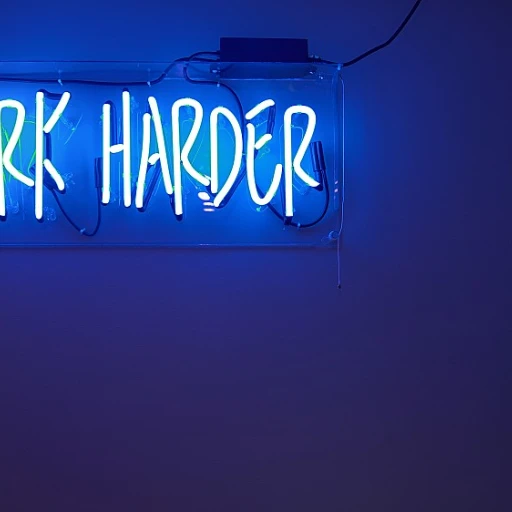Understanding the Role of AI in Recruitment
Integrating AI in Recruitment and Its Transformative Role
The world of recruitment is undergoing a seismic shift, driven in large part by the integration of artificial intelligence (AI) in various stages of the hiring process. This transformative technology is not just reshaping traditional methods but is also enhancing the efficiency and effectiveness of how companies identify and attract talent.
AI tools are revolutionizing the recruitment process by automating repetitive tasks, such as resume screening and job matching, which traditionally consumed significant recruiter time. These tools leverage data-driven insights to identify qualified candidates faster and more accurately than ever before. AI's ability to handle vast volumes of data enables recruiters to refine their candidate pool with precision, selecting top talent that aligns with the role requirements and company culture.
Predictive analytics, a pivotal component of AI in recruitment, enhances decision making for hiring managers. By analyzing patterns from previous recruitment cycles and candidate data, it predicts the future performance potential of applicants. This not only speeds up the recruitment process but also improves the candidate experience by ensuring that only those who meet specific criteria are engaged.
However, as AI takes on a more pronounced role in recruitment, it is vital for human resources leaders to strategically harness its potential while maintaining a human touch in their processes. Balancing technology with personal interaction ensures that the uniqueness of the candidates is appreciated, promoting a positive employer branding and attracting top talent.
Incorporating AI in recruitment is not just about leveraging technology for efficiency but also about forging a digital HR strategy that aligns with the strategic goals of the organization. For more insights on crafting a digital HR strategy laced with AI, it's worthwhile exploring strategic initiatives for integrating AI seamlessly into HR functions.
Leveraging Social Media for Talent Acquisition
Embracing Social Platforms for Talent Discovery
The recruitment landscape has undergone a transformative shift, primarily influenced by the rise of social media platforms. These platforms have transformed the way recruitment is approached, making it more interactive and creating new avenues for sourcing candidates. Social media allows companies to access a larger pool of potential candidates quickly and efficiently. Utilizing social platforms not only broadens the reach but also gives employers a unique way to understand the company culture and values of any prospective hire. By engaging with job seekers on a more informal platform, recruiters can assess candidates' social interactions, posts, and other online content that might not be visible through traditional recruiting methods. This data-driven process enables recruiters to find top talent who align with the company culture and values.Enhancing Employer Branding through Social Engagement
One of the significant advantages of incorporating social media into recruitment is the potential to enhance employer branding. Candidates are likely to engage with companies that actively communicate their brand values through social platforms. This engagement not only provides insight into the company’s culture but also attracts like-minded and qualified candidates. Building a strong online presence can make job openings more visible, thus enhancing the recruitment process and placing a company on qualified applicants’ radars.Streamlining Recruitment with Real-Time Interactions
Social media fosters real-time interactions between recruiters and candidates, allowing for a more dynamic and interactive recruitment process. Recruiters can leverage tools within these platforms to share job openings swiftly and collect applications, streamlining candidate screening and engagement. For instance, hosting live Q&A sessions or webinars can be an effective way to showcase company insights and address candidate queries. This active interaction helps improve the candidate experience, making them feel valued and informed throughout the hiring process.Integrating Predictive Analytics in Social Recruiting
The intersection of social media and predictive analytics offers powerful tools for recruitment. By applying data-driven techniques, companies can predict the behaviors and preferences of potential candidates, optimizing the selection process. Collaboration between social platforms and predictive analytics allows hiring managers to efficiently identify and engage with top talent, enhancing the overall efficacy of the talent acquisition process. To explore how a chief human resources officer can effectively incorporate these digital strategies, consider reading the insights shared in Crafting a Remote Work Strategy, which delve into leveraging technology for human resources management.Balancing Technology with Human Touch
Integrating Technology with Personal Interaction
In the rapidly evolving landscape of recruitment, striking a balance between leveraging innovative technology and maintaining the human touch is crucial. While technology, such as artificial intelligence and social media platforms, enhances the recruitment process by streamlining tasks like candidate screening and data analysis, it is essential for recruiters to ensure that the process retains its human-centric approach. The integration of AI and social media tools allows recruiters to access a broad talent pool, thereby simplifying the process of identifying qualified candidates. AI-driven tools can quickly sift through large volumes of applications, offering hiring managers the ability to focus on top talent. However, relying solely on such tools can depersonalize the recruitment process. Here's how companies can balance these elements effectively:- Human Interaction: Even as automated processes dominate the initial stages of recruitment, personal interaction remains key to understanding a candidate's fit within the company culture. Engaging with potential candidates through personalized communication and interviews fosters a positive candidate experience and strengthens employer branding.
- Collaborative Screening: Using technology to aid in preliminary screenings is efficient; however, the final stages should involve collaborative decision-making based on both data insights and human judgment. This approach enables recruiters to evaluate potential beyond predictive analytics.
- Continuous Feedback: Incorporating platforms where candidates can provide and receive feedback ensures that the recruitment process is interactive, allowing companies to refine their practices and candidates to feel understood and valued.
Ethical Considerations and Bias in AI Recruitment
Addressing Bias and Upholding Ethics in AI-driven Recruitment
The influence of artificial intelligence in recruitment offers tangible benefits, particularly when it comes to screening candidates and expediting the hiring process. However, with these advancements come ethical concerns, most notably the potential for bias. It's essential for human resources and recruiting teams to ensure that AI tools are used responsibly to promote fair and objective recruitment processes. One critical aspect to consider is the potential for bias in AI algorithms. Despite the data-driven nature of AI, there is a risk that these algorithms could inadvertently perpetuate existing biases found in historical data. For example, if a dataset reflects a hiring pattern that favors a certain demographic, the AI might inadvertently favor candidates with similar traits, putting diversity at risk. Therefore, it's vital for companies to regularly audit and update their AI systems, ensuring that they align with inclusive hiring goals. Moreover, the ethical deployment of AI tools necessitates transparency. This involves informing potential candidates about the use of AI in the recruitment process and explaining how their data will be utilized. Transparency helps in building trust with candidates, improving their overall experience during the hiring process. Recruiters should also take steps to complement AI-driven processes with the human touch. While AI can effectively handle tasks like the initial screening and sorting through large candidate pools, human intervention remains indispensable, especially for final interviews and decisions that require a nuanced understanding of company culture and team dynamics. Lastly, leveraging predictive analytics in recruitment calls for careful consideration. It's important to avoid over-reliance on AI predictions, as they should support rather than dictate decision-making. By balancing AI with human insight, hiring managers can make informed, ethical, and unbiased talent acquisition decisions, ensuring a diverse and qualified workforce.Data-Driven Decision Making in HR
Data-Driven Insights: Empowering the Recruitment Landscape
The digital age has propelled recruitment into a data-rich endeavor. By leveraging sophisticated tools and analytics, companies can enhance the recruitment process, ensuring they attract and retain top talent. Data-driven decision-making is transforming how recruiters operate, using insights to optimize every stage of hiring, from candidate experience to final selection.
The infusion of data into the recruitment cycle enables a more thorough screening of potential candidates. With predictive analytics, recruiters can better gauge a candidate's likelihood of success within a particular role. This foresight is invaluable in aligning the candidate with company values and culture.
- Understanding Candidate Behavior: Recruiters now have the ability to analyze data from social media platforms, job boards, and other online resources. This analysis uncovers patterns that may highlight the most promising talent pool, based on behavioral insights.
- Optimizing Recruitment Strategies: By evaluating metrics such as time-to-hire, cost-per-hire, and quality of hire, recruitment teams can make informed adjustments. This process helps fine-tune strategies to attract qualified candidates more effectively.
- Supporting Human Resources: The integration of AI and data (as discussed in previous sections) is streamlining the time-consuming aspects of the recruitment process. By automating initial screening and other repetitive tasks, hiring managers can focus on building meaningful connections with potential employees.
Although the artificial intelligence and data-driven recruitment process raises concerns about bias and ethical considerations, its strengths in eliminating inefficiencies are undeniable. By enhancing recruiter decision-making with data insights, companies are well-positioned to identify and secure top talent, driving future business success.
Future Trends in Recruitment Technology
Embracing Future Technologies in Recruitment
As technology continues to evolve, the recruitment landscape is undergoing significant transformation. HR leaders recognize the importance of staying ahead in incorporating future trends to enhance the recruitment process. The integration of predictive analytics, in particular, allows companies to anticipate workforce needs and refine talent acquisition strategies effectively.
To maintain a competitive edge, recruiters are increasingly relying on advanced data-driven tools. By analyzing comprehensive data sets, companies can make informed decisions throughout the hiring process, from initial candidate screening to final selection. Such data-centric approaches not only streamline recruitment but also improve the overall candidate experience by ensuring a more personalized interaction.
Incorporating artificial intelligence in recruitment is another game changer. AI-powered platforms can efficiently manage large volumes of applications, identifying top talent swiftly. These tools help in reducing time-to-hire, allowing human resources teams to focus on nurturing potential candidates and fostering a robust company culture.
Moreover, the role of social media in recruitment is expected to expand further. With platforms becoming integral to daily communication and networking, using them for talent acquisition is a strategic move. This trend allows organizations to tap into extensive talent pools and strengthen their employer branding efforts, attracting qualified candidates.
Finally, embracing remote work capabilities offers new opportunities for recruiters and companies alike. With remote recruiting and hiring on the rise, companies are enhancing their strategies to reach a broader audience and offer flexible job options, boosting their attractiveness to diverse candidates globally.











